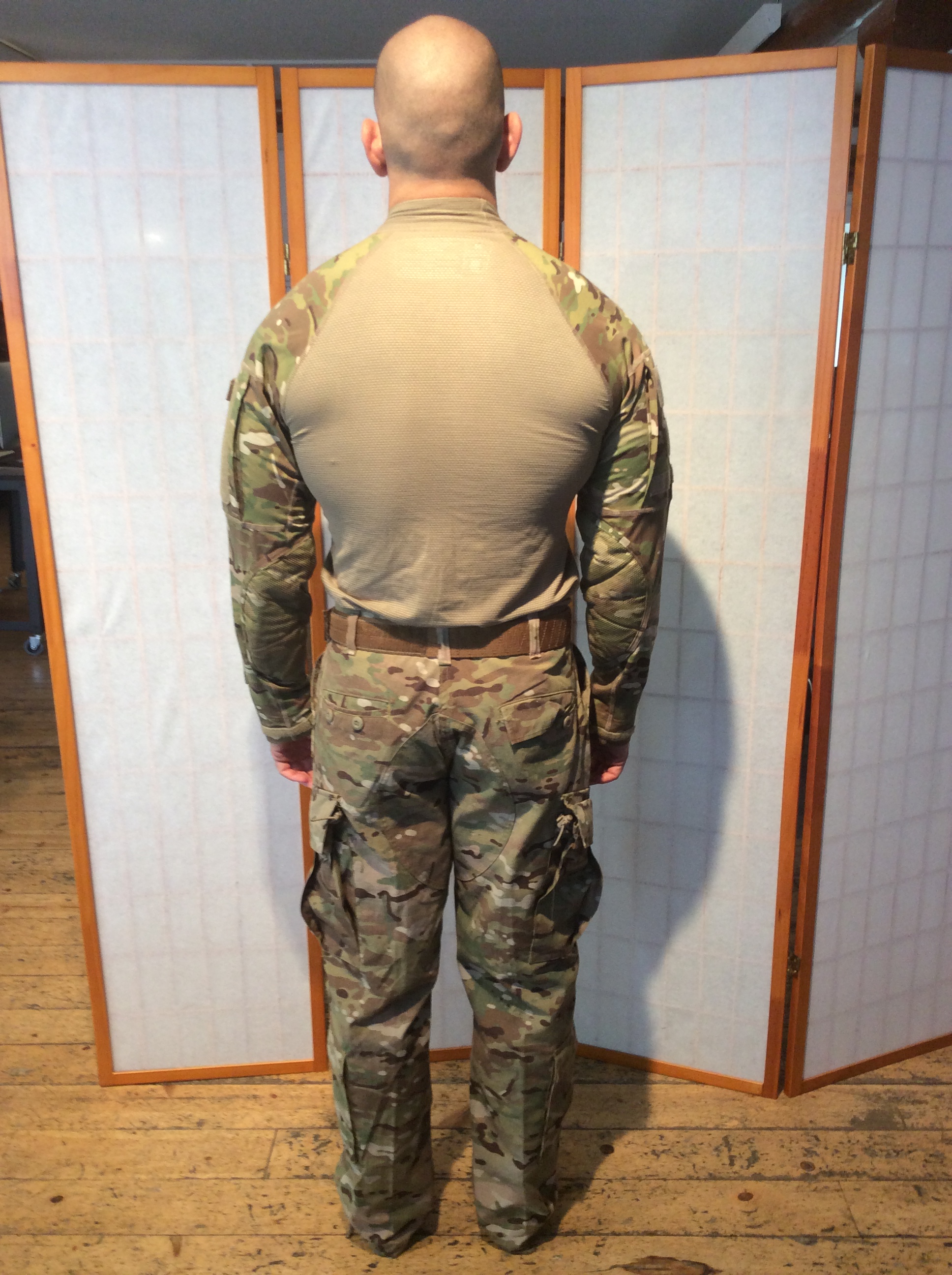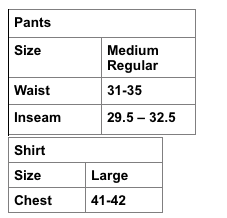
By Charles Bausman
This week, we review the Army Combat Uniform, issued to soldiers deploying worldwide. This uniform is the baseline for the purpose of the study in comparison with the Arc’teryx LEAF and Crye Precision combat uniforms. We will test along the following criteria under identical conditions as the Crye and Arc’teryx uniforms:
- Fit/comfort
- Function
- Durability

Uniform Wear Procedure:
The uniform was washed once before wear according to the printed instruction. It will not be washed going forward in order to observe the effect of sweat on the uniform over the two-week period. No undershirt is worn beneath the uniform. All activities are done in either Garmont NFS Boots or running shoes (unloaded running only).
Fit and Comfort:
The most glaring flaw in the design of the Army uniform shirt is the fit of the material on the chest and neck. The material fits close to the skin with a spandex like feel. To the lab rat, this was constricting and uncomfortable.
There is no buttoned or zipper collar to the shirt, but rather a mock turtleneck type design. Besides looking ridiculous, this was extremely uncomfortable to the lab rat.
The sleeves were tight from the wrist to the bicep, slightly restricting some movement and reducing airflow through the sleeve.
The pants were the softest out of the box, and a fairly standard design. The waist sizing for Medium Regular is 31-35in, and therefore very loose on the lab rat without a belt. There is a drawstring weaved into the waistline, which can be tightened and tied. However, the lab rat found that it came undone often while training. The fit was easily the baggiest of the uniforms tested with plenty of space to move. Conversely, this had the highest probability of snagging on objects while moving.
Function:
Function for the shirt was reduced due to the tight, form fitting nature of the shirt along the chest, neck, upper back, and arms. Sizing was so poor on this shirt that we would recommend going one size up based on recommended sizing.
The function of the pants was as expected due to the loose fit. Movement was unrestricted and little stress was placed on the seams. The waistline was large and three inches of extra material was folded beneath the belt to ensure the pants remained in place.
Pocket positioning was similar to that found in standard issue uniforms worn in garrison. The shirt has a zipper-opened pocket on each shoulder, large enough to fit a small notebook. There is Velcro positioned on top of the pocket for use.
A convenient feature is a slip of material sewn onto the lower sleeve to place a pen, pencil, grease pen, etc.
The Pants have two very large buttoned cargo pockets, the largest of any of the uniforms tested. They are deep and wide for plenty of storage space, but require bending and digging to grab what is needed. As with the other uniforms, there is a pocket on each lower leg.
Durability:
The design of the shirt and stress points along the shoulder seems lead us to believe that it would develop tears quickly extended wear. The canvas material used in the sleeves and pants is thinner in comparison to Arc’teryx LEAF and Crye Precision, and therefore more likely to wear down more rapidly.
The elbows and knees do have additional material reinforcing the joint. It is still less thick than the other uniforms and likely less durable.
Overall Impressions:
As stated previously, the cut and design of the shirt is uncomfortable and not functional. Designers should consider removing the mock turtleneck style and implementing a zippered or buttoned collar along with a looser fit in the torso and sleeves. The pants loose fit was comfortable to the lab rat, but he did snag a branch and nearly trip along the side of the shin while rucking through the backcountry.
The wide variation in the waistline sizing is likely due to Army procurement and mass manufacturing purposes. Soldiers on the smaller end of the sizing chart of the pants should consider tailoring the waist slightly, as they will only loose weight while training and during deployments.
In two weeks, we will begin our lab tests to determine the durability of each uniform. We will measure the following aspects:
Drying
How quickly does each uniform dry after complete submersion for five minutes.
Puncture
Amount of weight required to puncture each uniform in areas with high probability of snagging.
Tear
Amount of weight required to tear the material stemming from the puncture point.
Abrasion
Under constant friction, how long will the thread material remain intact.
Seam Strength
Amount of force required to tear the seams located at major joints.
Questions/Comments Email Charles@militaryathlete.com